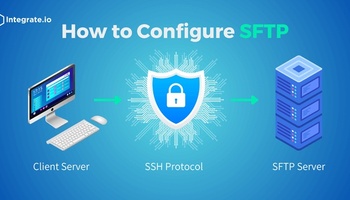Unfortunately, most of us have had our sensitive data or personal information compromised at one point or another. Whether the leaked data involves credit cards, a bank account number, a social security number, or an email address, nearly everyone has been a victim of a third-party data breach. In 2020, over 155 million people in the U.S. — nearly half the country's population — experienced unauthorized data exposure.
Far too many of these attacks were preventable, as they happened because of lax data security and privacy standards. To avoid an expensive data breach that damages your reputation, you need to take proactive measures and safeguard the personally identifiable information (PII) that you store and process.
In this article, we discuss one of the most crucial data privacy techniques: PII substitution. You'll learn what it is and how it can help you improve your information security.
What is Personally Identifiable Information (PII)?
Personally identifiable information (PII) is any personal data or sensitive information that may reveal or help someone infer an individual's identity. Below are a few examples of the different types of PII:
Identifiers: first, middle and last names; home address; phone number and other contact information; age; date of birth and place of birth; mother's maiden name; gender; race or ethnicity; nationality; ID numbers (e.g. social security number or passport ID)
Work and education: employee or student ID; workplace or school address; years of work or study
Biometric data: biometric templates (i.e. digital representations) of an individual's fingerprints, retina scans, facial recognition data
Internet data: browsing history, search history, IP addresses, mobile app activity, geolocation data
Financial information: credit card numbers, SSNs, bank account numbers
What is PII Substitution?
The term "data masking," also known as "data obfuscation," refers to a collection of information technology techniques used to conceal the contents of PII data. One such methodology is data substitution, in which dummy, placeholder, and/or false values and characters replace the real elements of the dataset.
For example, if you want to mask a 10-digit telephone number, you might substitute the first six digits with the character X, (e.g. (XXX)-XXX-5162). This substitution suffices to conceal any data elements that can connect this information to a real person while still retaining a good deal of information from the original dataset.
In other cases, PII data substitution involves not dummy or placeholder characters, but the replacement of the real data with false yet realistic data. There are a number of algorithms that can generate artificial data based on an underlying original dataset, preserving many statistical properties so the info is still useful for IT testing and QA purposes.
PII Substitution for Data Privacy
A data breach occurs because of unauthorized access or unauthorized disclosure of PII. Laws in all 50 states require organizations to send a breach notification to the victims of identity theft immediately after they discover that a security breach has occurred.
Data breaches won't just harm your reputation among customers and investors — they can also be financially damaging. According to IBM's "Cost of a Data Breach" report, the average total cost of a PII breach is now over $3.8 million. Even worse, it takes organizations an average of 280 days to identify and contain a breach after it occurs.
The penalties for noncompliance depend on the industry, with many sectors having their own specific regulatory compliance issues. For example, HIPAA (the Health Insurance Portability and Accountability Act) governs how healthcare organizations treat patients' private medical information, while NIST Special Publication 800-53 describes the security policies for government agencies.
There are smart actions you can take to avoid a data breach: using a solid data management system throughout the life cycle of PII data, implementing access control to PII from mobile devices and laptops, etc. In addition, PII substitution is a data privacy best practice for multiple reasons:
If your original PII data leaks to a third party, a malicious actor could steal it and exploit it, or share it with a larger audience. Performing PII data substitution conceals any identifying information when the data leaves its original source. Other data security techniques, such as encrypting sensitive data, can also act as an additional layer of protection for PII.
How Integrate.io Can Help with PII Substitution
Thus far, we've talked about what PII substitution is and why you need it — but how can you enact PII substitution for your own enterprise data? We can help. Integrate.io is a powerful data integration platform with more than 100 pre-built integrations for third-party applications and services.
With Integrate.io, it's easy to define rich, complex data transformations on the data you extract from your source files and databases — and those transformations include PII substitution algorithms.
Ready to learn more? Get in touch with our team of data experts today to discuss your business needs and objectives, or to start your 14-day pilot of the Integrate.io platform.










